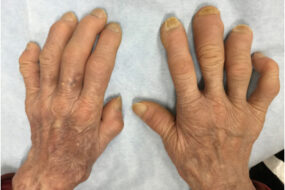- Home
- INTERNAL MEDICINE
- Marfan’s Syndrome

Marfan’s syndrome is a rare autosomal dominant inherited connective tissue disorder linked with an increased risk of aortic dissection and aneurysm. Mutations in the coding of proteins affect the FBN1 gene that codes fibrillin, which subsequently disrupts connective tissue integrity.
Clinical features
Aortic dissection and aneurysm, mitral and aortic valve regurgitation, laxity of skin and hypermobile joints, body habitus anomalies such as long fingers, legs, and arms, pectus excavatum, scoliosis, high arched palate, susceptibility to pneumothorax and eye abnormalities that include retinal detachment and dislocation of the lens.
Investigations
- Clinical features usually raise suspicion of the disease, which should be established by genetic tests
- X-ray of the chest may reveal dilatation of the aorta, but an echo is preferred as it has higher sensitivity and can detect valvular abnormalities.
- Serial aortic root monitoring by echo for those already confirmed to have Marfan’s syndrome, and if dilatation is seen, elective surgery should be scheduled
Management
- β-blockers- reduce the risk of dilatation of the aorta, to be administered to all patients with the syndrome
- Aortic root replacement surgery – for those with increasing aortic dilatation.
- Patients should also avoid any activities which increase their cardiac output.












